By Dr. Bhagirath S. Naganath
[Continued from yesterday]
Maharaja’s College had a Common Room where everyone assembled to converse and exchange notes. T.S. Venkannayya (T.S.V.) was a regular participant in this arcadia and had a large fan-following among students and peers alike. A.N. Murthy Rao records that, although T.S.V. joined the Common Room as a member (and remained one all throughout), he was for all practical purposes its undisputed leader and rest of the bunch, his humble followers had the least bit of enthusiasm to rebel or break free from his ever-loving embrace! Venkannayya was the founder of the ‘University Teachers’ Association’ which was a forerunner to ‘Prasaranga.’ These and many more such initiatives were collectively described by Prof. Rollo as the ‘Mysore Experiment.’
T. S. Venkannayya’s Students
Venkannayya inspired and guided a whole line-up of writers and litterateurs of his time — T.N. Srikantaiah, K.S. Narasimha Swamy, M.V. Seetharamaiah, C.K. Venkataramaiah, K. Venkataramappa and G. Venkatasubbiah.
Kuvempu and Masti Venkatesha Iyengar
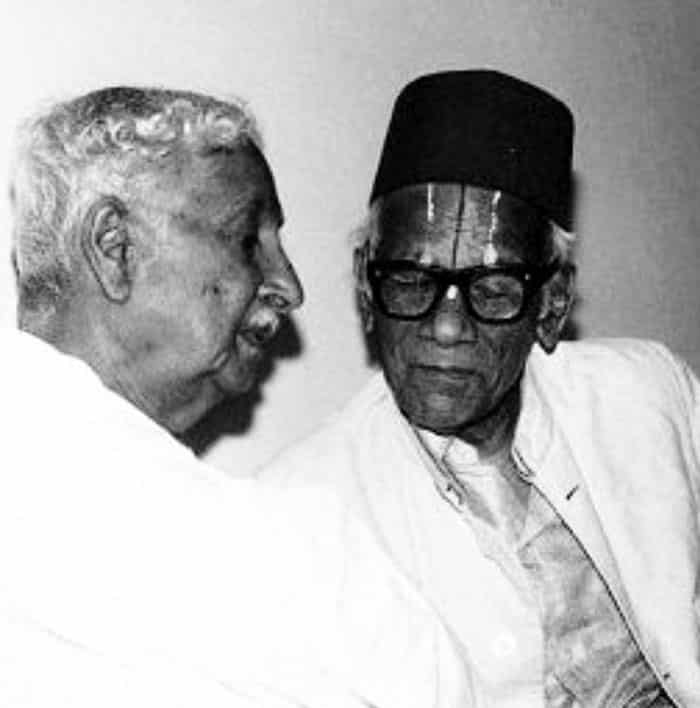
T.S. Venkannayya moulded and shaped K.V. Puttappa (Kuvempu) who became Kannada literature’s future beacon. Puttappa had sent in his entry to a story writing competition. It was adjudged as the best entry and the first prize was awarded to it. Puttappa could not attend the award ceremony personally. T.S. Venkannayya took it upon himself to receive the prize and deliver it personally to the discerning young boy, who was resident at the Ramakrishna Ashram in Mysore. This gesture from a senior member of the faculty captured Puttappa’s heart. Years later, Kuvempu would record this incident in his diary (transl.) — ‘He (T.S. Venkannayya) was ever ready to nourish and nurture a true talent when he came across it. It was in his maternal embrace that I found myself overcoming my otherwise cold desolation, on more than one occasion.’
Kuvempu further records that Venkannayya’s teaching style was such that every student in the classroom felt that he (or she) was indeed the centre of Venkannayya’s attention and hence felt elated! Venkannayya served, in Kuvempu’s words, as a bridge between Kannada and English poetry as he was able to discuss both with effortless ease. He held both literary worlds on the same plane and was masterly in this comparative teaching technique. Puttappa’s participation in various literary events, competitions and conferences were at Venkannayya’s behest.
In his later years, T.S. Venkannayya would frequent Kuvempu’s house and spend hours listening to his poetry and other writings. On one such occasion, Venkannayya spent half a day listening to Kuvempu recite his poetry. Tired, Venkannayya took leave in the afternoon. Just before he got up to leave, Kuvempu offered to read few lines from his latest work — ‘Ramayana Darshanam.’ Venkannayya promised that he would make another trip in a few days’ time and had to head home as he was feeling fatigued.
The next evening Kuvempu found himself seated in his bedroom giving the final touches to his book. This task preoccupied him completely into the late hours of the evening. Around 11 pm in the night, he distinctly heard a knock on the door. He impatiently stood up, walked to the door and was surprised to find no one outside! Perplexed he stood there for a while and then closed the door in disbelief and made his way back to the table. Then, he distinctly felt another presence in the room, almost right behind him, seated on his bed. This greatly unnerved him. Nonetheless he gathered his spirits, remained calm and tried to rationalise the experience in his mind. He was giving finishing touches to his ‘Ramayana Darshanam’ and completed it by dedicating it to his guru T.S. Venkannayya in the very first page. Exhausted and famished, he went to bed. He woke up next morning to the sad news of Venkannayya’s demise the night before!
While in life, Kuvempu never got an opportunity to show ‘Ramayana Darshanam’ or read verses from it to his guru, it was almost as if, Venkannayya in his final moments had decided to visit and peruse this work himself before departing from this world! Kuvempu also acknowledged Venkannayya as his inspiration for his novel ‘Kanooru Heggadithi’ set in Malnad. T.S. Venkannayya undertook a tour of the Western Ghats to enjoy the lush environs of the Malnad region, as described in his students’ novels.
D.L. Narasimhachar and S.V. Parameswara Bhatta
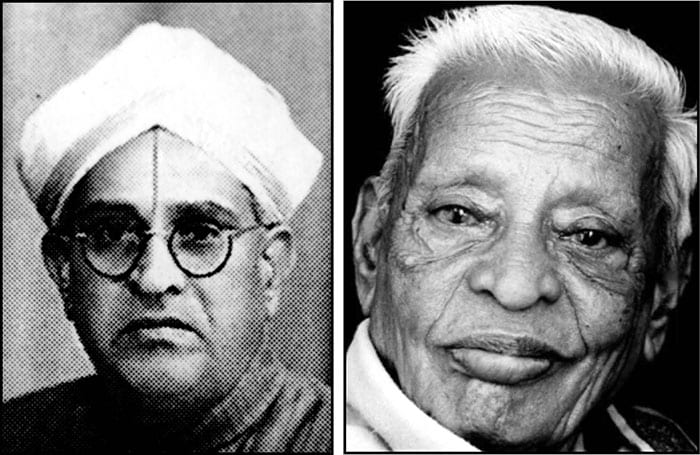
Venkannayya was instrumental in guiding D.L. Narasimhachar (D.L.N.) through the basics of editing old palm leaf texts. S.V. Parameswara Bhatta (S.V.P.B.) records in his memoirs that Venkannayya always made it a point to feed his students well before beginning one of his impromptu discourses! Once during a College competition arranged in the Karnataka Sangha, S.V.P.B. performed very well and yet missed out on the prize. Venkannayya who was there in the audience realised that his student may feel dismayed at this unfortunate turn of events. He at once instituted a prize and presented to his student! S.V.P.B. treasured this prize well into his later years — a volume of Basavarajadevara Ragale.
Manvi Narasingha Rao
R. Narasimhachar, B. M. Srikantaiah and T. S. Venkannayya were conducting the viva voce exam for Manvi Narasingha Rao during his M.A. finals. Rao had to travel back to Hyderabad in the evening. After the examination, Rao was about to make his way back to the hostel to get ready for the journey. Venkannayya caught him outside the examination hall and implored him to visit him at his residence for a few minutes before embarking on a journey to Hyderabad. Perplexed, Rao agreed to his teacher’s request and visited his house that evening.
To his surprise, Venkannayya came out of his room dressed in traditional attire carrying a silver plate full of coconut, betel leaf, arecanuts and some token of cash in it. Presenting this plate to him, he kept a beautiful red rose on top of the ensemble and congratulated Rao. By now Rao had little clue as to what was happening. Venkannayya gave him the good news that he had indeed passed the exam and furthermore had done so in first class! He embraced Rao affectionately and bid him adieu from Mysore. Rao remembered this show of affection with great relish in his memoirs decades later.
M. Shivaram (Ra. Shi.)
M. Shivaram, known better by his pen-name Ra. Shi., is remembered for his years as the editor of ‘Koravanji’. A student of Central College, Bangalore, he and his friends during their student years had chosen Sanskrit as their second language as it was believed that it was an easier way of scoring good marks.
But over time, they learnt from their friends that their respective Kannada classes under T.S. Venkannayya’s tutelage were superlative both in quality and content! Shivaram and friends felt left out. With this in mind, they approached Venkannayya and requested that they be taught select portions of the Kannada syllabus as well. T.S. Venkannayya thought for a moment and with a smile on his lips readily agreed.
Shivaram writes in his memoirs that these classes by Venkannayya on ‘Gadayuddha’ were a most memorable experience for these part-time Kannada students!
His son’s death
In 1931, Kannada Sahitya Sammelan was conducted in Mysore. As part of this celebration, various events were also organised. A Gamaka recital was arranged and the participants were invited to lunch at Venkannayya’s residence. Venkannayya’s close friend Rajeeva Lochanam was also present. Just before lunch was to be served, there was a loud shriek from downstairs. Venkannayya rushed downstairs to find that his ailing four-year-old son had passed away. He had been sick for a while and had been shown to many doctors and treatments provided for. But it was all in vain.
Venkannayya was heartbroken and had tears in his eyes. He composed himself and requested his brother and son-in-law to make necessary arrangements to carry out the funeral. He washed his face and with a solemn resolve made his way upstairs to make sure that lunch was served as planned! After every invitee was fed to his satisfaction, they took leave of him. Rajeeva Lochanam stayed back to enquire as to why he didn’t see Venkannayya’s wife during lunchtime — normally she served everyone her tasty payasam.
Venkannayya’s persona
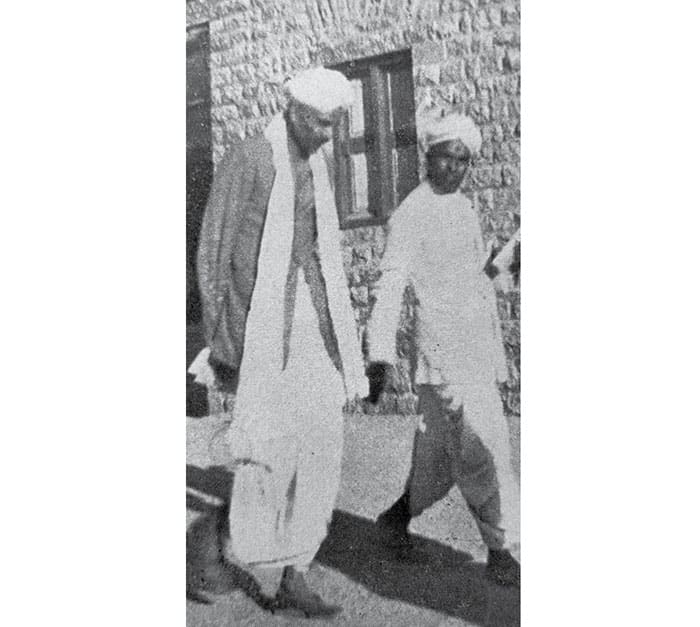
Venkannayya was in excess of six feet height and was of lean built. His face had an unmistakable square jawed countenance, with a thickset moustache and sported a rather contemplative look. He was always affable in his demeanour towards everyone. A Melukote dhoti and a black coat completed his usual attire. Owing to his towering height, he was known to slouch a bit at the shoulders and was most often seen to have his hands clasped behind him. He would perform sandhyavandhane daily followed by the reading of a few verses of Ramayana and Bhagavadgita.
Then Venkannayya had no option but to tell his good friend what had happened. He tried impressing on his friend the correctness of his decision in going ahead with the lunch, as there was little to be gained by upsetting the august gathering with this ill-timed news.
After all, no effort had been spared in sufficing medical aid to his ailing son and he had succumbed.
Furthermore, he smilingly said that, as ardent readers and followers of the Bhagavadgita, it was of vital importance that the essence of the Gita be practised in everyday life and that every effort should be made to become a sthithapragna against all the travails of life! Rajeeva Lochanam had a look of incredulity on his face and was positively livid. He shouted at Venkannayya that he was not a human being in any sense of the word and walked out!
Spirit of Generosity
A poor law student once mailed Venkannayya requesting for some financial help with regard to his fees. Venkannayya immediately took whatever little money there was in his bureau and then requested his brother to contribute by an overdraft from the local Co-operative Society. Furthermore, he requested his brother to mail the money order to the discerning student at the earliest. He also added that on his way back from the post office, he ought to destroy the mailing receipt so that one would never be able to remember the student’s name!
Once, Venkannayya went out of his way to get the B.M. Sri Scholarship re-allocated to another poor student instead of it coming the way of his own younger brother! When T.S. Shama Rao confronted his elder brother on this, his answer was that he had already paid his fees and felt that the scholarship should therefore be available for somebody more discerning! Such was Venkannayya’s sense of generosity and equanimity.
A poor student once came begging for food in the early hours of the morning. Venkannayya’s mother asked the boy to move on and possibly come later in the day. Venkannayya, who was speaking to one of his colleagues, ran out of the house and stopped the student from walking away. Then he turned to his mother and asked her if cooking was not yet finished? She answered that it was indeed over, but the first offering of food to God was not yet done and hence she was unable to feed him.
Venkannayya immediately quoted the Ramayana where the Great Rama himself did not mind the half-eaten fruit which he received from Shabari! He made sure that the poor student was indeed fed first, even if it meant that it preceded the daily customary offering to God during the morning rituals.
Addiction to snuff !
Venkannayya was known for his attachment to snuff. When chided by many for this, he said we consider Tulsi or Spinach leaves with much respect and even adoration, then why not these Tobacco leaves, which give one much needed comfort and solace?
A matter of height!
The famous Gamaki Anantha Padmanabha Rao had invited Venkannayya to his house in Mercara (Madikeri). Rao’s house was an old-fashioned wooden house with a set of doors too narrow and low. Venkannayya being very tall tried entering the door stooping down. Even this effort ended in his turban being knocked off! When people inside the house rushed to his aid, he reassured them that he was indeed fine and that, once in a while, it was necessary for every man to feel humbled!
Similarly, T.P. Kailasam, who was short in stature, on one of his visits to Venkannayya’s house turned his head up and asked Venkannayya as to how things were up there in heaven?!, to which Venkannayya looked down and replied with another question — What’s new in the recesses of the underworld?! (pathalaloka).
Venkannayya never missed an opportunity to visit V. Seetharamaiah at his Bangalore residence. Seetharamaiah’s house was again one of those old-fashioned ones with a dwarfed entrance. Seeing Venkannayya bow down every time he entered, Seetharamaiah went out of his way to get the entire door-frame replaced with a larger and taller one! Such was his affection and regard for Venkannayya.
Literary output
Venkannayya’s literary output was small, but what little was written was of a superlative standard. Kuvempu attests to the fact that Venkannayya’s endearing contribution to Kannada literary landscape was not with his own writing, but instead in recognising and nurturing budding talent across three decades!
T.S. Venkannayya along with A.R. Krishnasastry was among the first people to bring Sri Ramakrishna Paramahamsa’s biography into Kannada from Bengali. Venkannayya translated about four works, was involved in the Editorial work of nearly six works with the likes of D. L. Narasimhachar and A.R. Krishnasastry and authored nearly ten articles on a host of topics.
Venkannayya introduced student poetry journals at Maharaja’s College titled ‘Kiriya Kanike’ and ‘Taĺiru.’ He initiated drama troupes to enact such plays as ‘Nagananda’, ‘Saavina Samasye’ and ‘Ashada Bhoothi.’ He was instrumental in organising ‘Kumaravyasa Jayanthi.’ He encouraged famous Gamakis like K. Krishnarao, S.G. Bindu Rao, K. G. Sampathkumaracharya and Mayi Gowda.
His last days
Venkannayya passed away on 14th February 1939. Masti Venkatesh Iyengar and Kuvempu took the lead in organising Venkannayya’s funeral arrangements. Owing to Venkannayya’s over-arching generosity, there was little money left for his own funeral! J.C. Rollo, B.M. Srikantaiah and N.S. Subba Rao came to the rescue and wrote to the University Treasury to release two months’ worth of salary, albeit posthumously. Thanks to this, Venkannayya’s funeral could be conducted as envisaged.
There was a three-day memorial event held at Taĺaku spearheaded by Nittur Sreenivasa Rao, Belagere Chandrashekhara Sastry, Belagere Janakamma and Belagere Krishnasastry. These events were later remembered as the ‘Nittur circus’! A Venkannayya Smaraka Granthalaya was built in 1989 with State aid and T.S. Shama Rao donated Rs. 30,000 worth of books to this library.
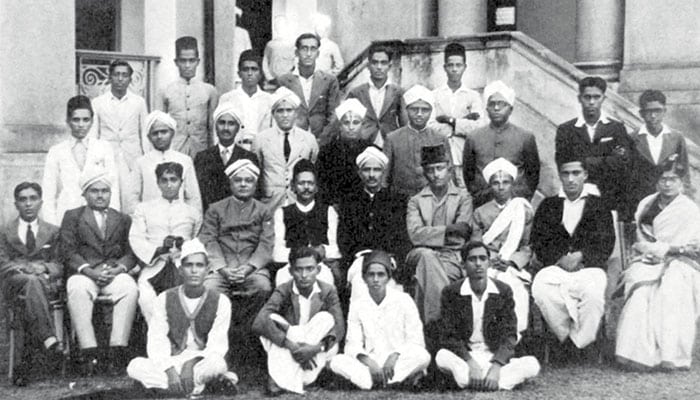
Legacy
T.S. Venkannayya and T.S. Shama Rao were fond of long evening walks where they discussed, often for hours, about everything from history to theology and literature to religion. On one such walk, the discussion turned to Lord Krishna. Venkannayya spoke for nearly two hours leaving Shama Rao spellbound. At the end, Shama Rao implored Venkannayya to put in writing that which he had just delivered extempore. Venkannayya immediately asked his brother as to what was to be achieved with such an endeavour? Shama Rao explained that such profound depth of knowledge and perspective should be shared with generations to come, thereby leaving a footprint in the sands of time. Venkannayya smiled and spoke after a long silence. He said that when such people as Rama and Krishna were scarcely remembered today, why must mere mortals like us expect to be remembered in the future?
Shama Rao recollected this incident with Kuvempu at Venkannayya’s funeral. Kuvempu answered that he was in agreement with his teacher. However, he added that a man’s legacy lies often not in what he said or did, it lies more so in the impression he had on people around him, and in the way he nurtured future generations who came under his influence — and in this aspect, Venkannayya could never be forgotten! Lastly, he added that the greatest tribute he could give to his teacher was a dedication in the very first few pages of his forthcoming book ‘Ramayana Darshanam’. As long as mankind read this great epic, they would remember T.S. Venkannayya’s name.
[References: 1. T.S. Venkannayya: A Short Biography – Edited by Dr. T.V. Venkatachala Sastry (Mulukanadu Sabha, Mysore) – 2000; 2. T.S. Venkannayya: A Monograph on Modern Kannada Writer by Ramegowda – Sahitya Akademi, Delhi – 2017; 3. T.S. Venkannayya by T. S. Gopal (Ed. Dr. Na. Someshwara) – 2015; 4. Vinnayónnati – Festschrift Volume honouring T.S. Venkannayya – 1986; 5. Savinenapu: Divangata Prof. T.S. Venkannayyavara Smaraka Grantha – 1970; 6. Extracts of Kuvempu’s tribute to his teacher T.S. Venkannayya from ‘Ramayana Darshanam’.]
(Concluded)
e-mail:[email protected]



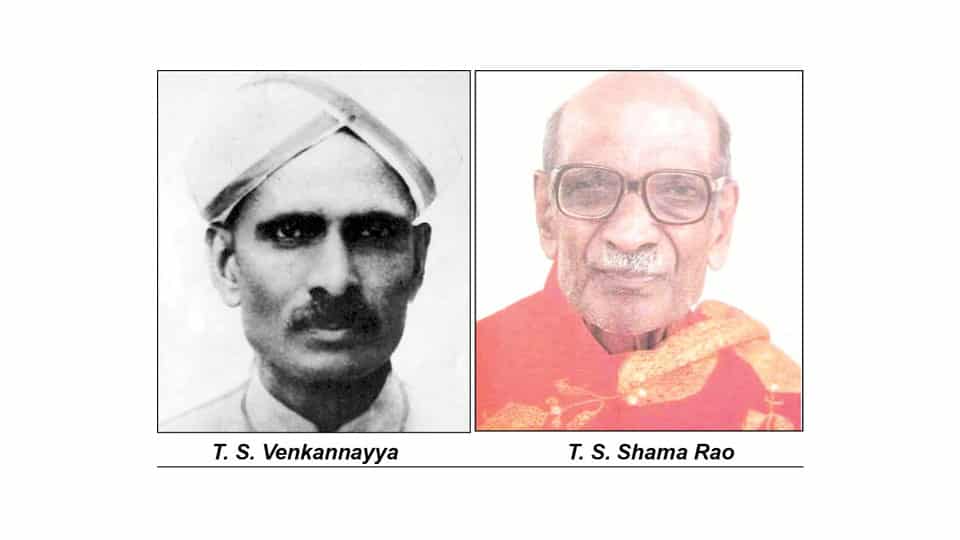
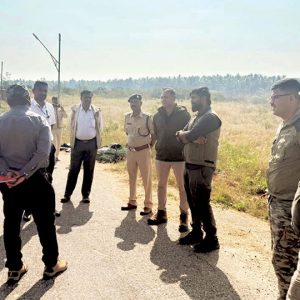
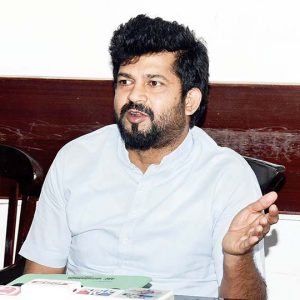
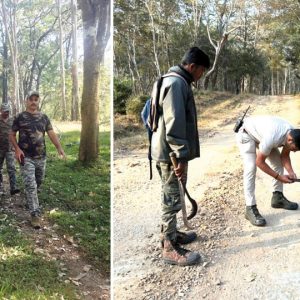
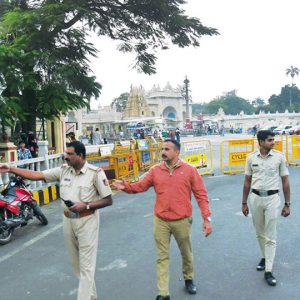
This author often does incomplete research. Most of what is written was well known.
What is not known is that T.S. Venkannayya inspired on of the yound lads, his relative and this young lad developed latere into a superb novelist, who we know by the name of TA RA SU.